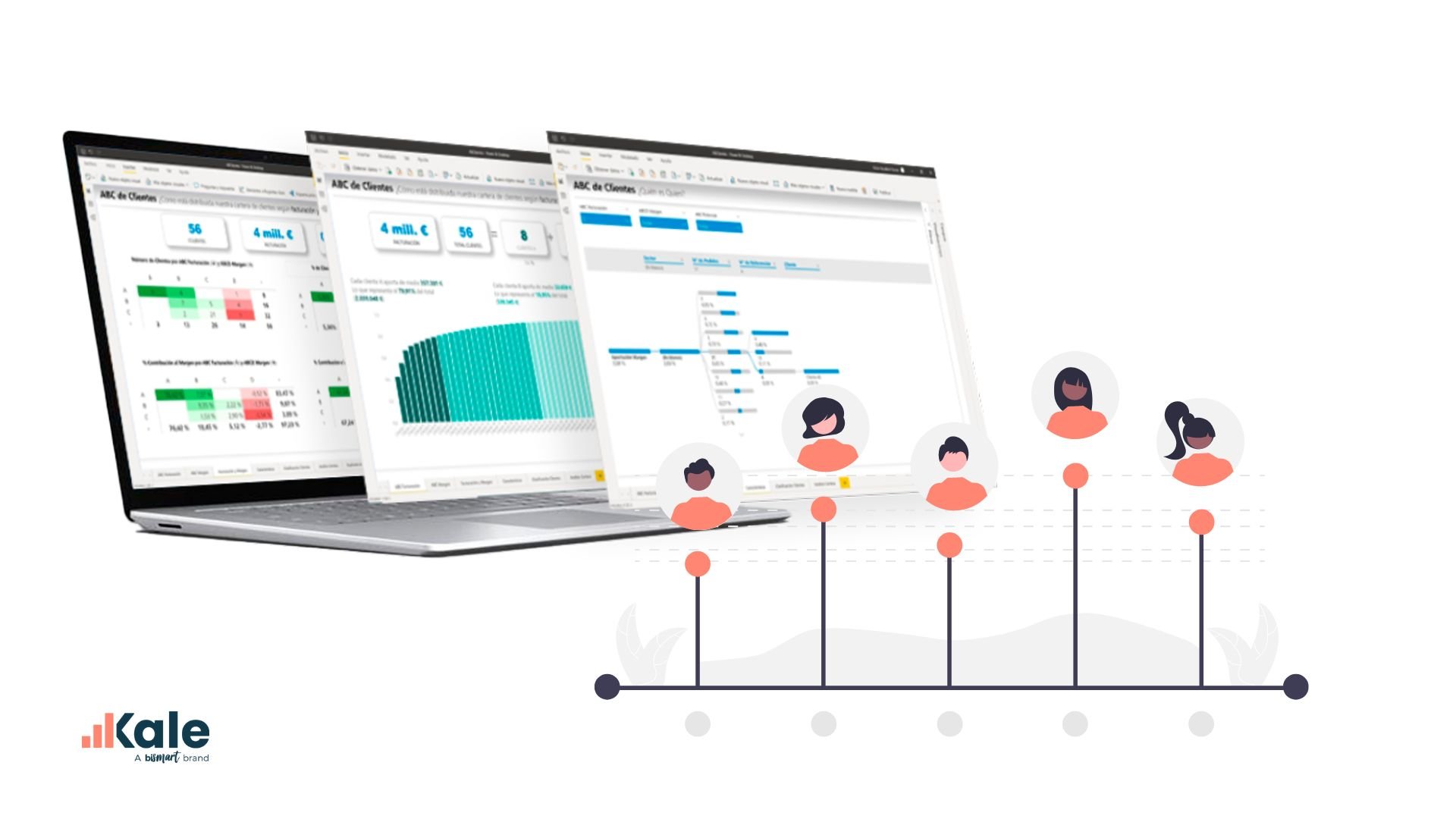Customer segmentation is one of the most efficient processes to know our customers and develop customer-centric strategies. However, there are different types of customer segmentation and not all produce the same results. Learn about them here.

Segmenting customers by looking at their similarities and differences is a recurring process in the business world, especially in marketing and sales.
Customer segmentation is the basis of the customer-centric strategy as well as paramount for running customer intelligence and customer analytics strategies. Customer segmentation is key to build a customer-centric strategy, as it allows you to classify customers into groups according to their traits, which allows professionals to develop niche-specific sales and marketing strategies as well as one of the most trending marketing strategies, the personalization of the customer experience.
Hyper-personalization is now everywhere. In this regard, segmenting customers has become a necessity for companies. It is practically impossible for all customers to fit into the same group. Their needs, preferences and consumption habits are diverse and, therefore, to truly satisfy their clients, organizations must build tailored strategies and actions, targeting each type of customer profile.
Don't miss our e-book on ABC analysis of the customer portfolio.
- Learn how cohort-based customer segmentation works.
- Discover how to implement an ABC analysis.
- Discover how to automate the process.
What is customer segmentation?
Customer segmentation is the process of organizing customers into specific groups based on shared characteristics, behaviors or preferences, in order to offer them personalized service and a better customer experience.
Customer segmentation plays a key role in the launch of a new product or service. The target audience for a particular item is also a customer segment, but, in such case, specific to one of the products or services offered by a brand.
Today, customer segmentation depends on customer data analysis. In other words, for a segmentation process we need to analyze information about our customers. At the same time, the segmentation process will help us to enrich this information and get to know our customers better.
Although it may seem a simple task, a customer segmentation should be a complete process that takes into account multiple variables such as the company's business objectives, the products and services offered, etc. This is the only way to guide the segmentation process so that it has the most appropriate approach according to the needs of each business.
What types of customer segmentation are there?
At the moment, there are many ways to carry out a customer segmentation process. Beyond the procedure, segmentations can vary in depth —some are very basic and others explore customer characteristics in greater depth— and in specificity. As mentioned above, a company may conduct a segmentation for a specific purpose —such as the launch of a new product—. However, all companies should have a general base segmentation.
The most common types of customer segmentation are:
-
Buyer Persona: The Buyer Persona is a type of customer segmentation and probably the most widely used by companies. It consists of developing detailed profiles for each type of customer, using storytelling to get a complete picture of their characteristics.
-
Life cycle segmentation: This segmentation strategy is based on the age of consumers, as well as their lifestyle, behavior and consumption habits, among other relevant factors.
-
Transactional segmentation: In this modality, customers are classified according to their purchasing behavior, taking into account the products or services purchased, frequency of purchase, value of purchases, points of sale, and other related criteria.
-
RFM (Recency, Frequency, Monetary): The RFM model is based on three variables: recency (i.e. when was the last time the customer interacted with the company), frequency (how often they make purchases) and monetary value (how much money they spend on each purchase). These variables are used to segment customers and better understand their behavior.
-
Customer clustering using machine learning algorithms: In this approach, machine learning algorithms are applied to customer segments to identify patterns of similarity between groups and find more specific variables within each segment. This technique is known as customer clustering, similar to customer scoring.
-
Cohort-based segmentation: This strategy, also called ABC analysis, analyzes a company's customer base in depth and classifies customers according to their contribution to the company's revenue and profitability. This segmentation allows companies to understand how much of their growth comes from their existing customer base and how many new customers they need to acquire to meet their goals, among other actionable insights.
It is worth mentioning that these types of segmentation are not mutually exclusive. On the contrary, the use of two or more of these models multiplies the benefits.
For example, the Buyer Persona method, which is a very descriptive and extensive type of segmentation, can be combined with an ABC type analysis, which is much more quantifiable and action-oriented.
- Don't miss our template to create a Buyer Persona
Why perform an ABC analysis of your customer portfolio based on cohorts?
ABC segmentation is one of the most distinct from other types of segmentation due to its characteristics, methodology and results.
This type of segmentation does not explore the basic criteria usded in other segmentations, such as gender, age, place of residence, etc. Instead, it overlooks all this information to focus on the degree of contribution of each customer in terms of revenue and value creation, as well as the seasonality of consumption.
The authors of the book 'The Customer-Base Audit: The First Step on the Journey to Customer Centricity', Peter Fader and Michael Ross, argue that companies that do not combine traditional customer segmentation with cohort-based analysis of their customer base are not taking advantadge of their customer data.
According to the authors of the book, the main advantage of cohort segmentation is that the members of a cohort remain constant. That is, they do not change over time. This makes cohort-based customer portfolio analysis the only one that is efficient in the long term.
Another of its great advantages is that it is an action-oriented type of segmentation, whose main objective is to provide insights that allow sales and marketing professionals to increase their revenue and implement specific actions for each type of customer, focusing on the most profitable customers.
While other types of customer segments focus on knowing the customer, this type of segmentation is oriented towards maximizing the profitability of each customer and optimizing sales and marketing strategies.
How to carry out a customer portfolio analysis or ABC analysis?
Carrying out an exhaustive analysis of the customer portfolio in order to obtain key information on customer behavior is not an easy task and requires the expertise of specialized professionals in the field.
However, there are technological solutions that automate the process.
Find out how to perform an ABC analysis with our e-book "ABC Analysis of the Customer Portfolio: Where and How to Start?":




